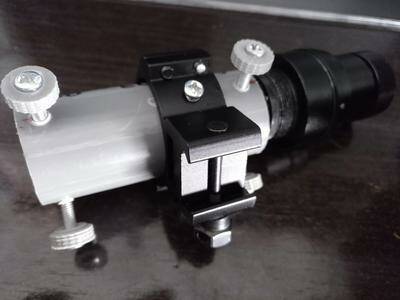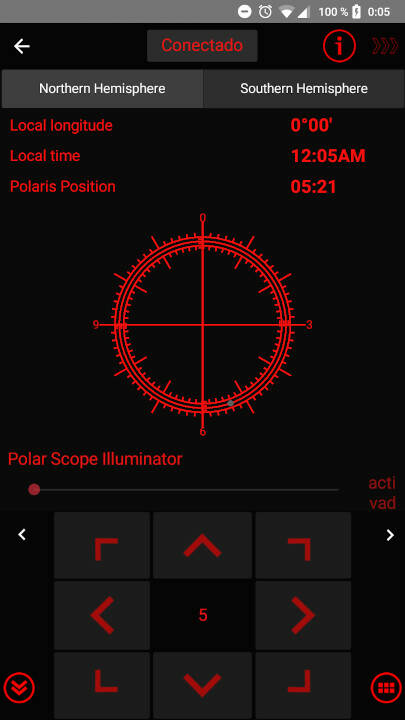AZ-GTi polar alignment and other equatorial mounts alignment

In each session in which we are going to mount our mount from scratch, we will have to follow a meticulous process between whose steps is the polar alignment.
Polar alignment is very important to achieve the best possible tracking and guidance results, so this step is crucial for any shooting session.
To use this method, our polar seeker must be well collimated with the Right Ascension axis of our mount.
Polar alignment for the AZ-GTi using a polar seeker is performed in the same way as for any other equatorial mount. The steps to make a good polar alignment are the following:
First we must check the position of the pole star in one of the many applications there are for it. I use the Skywatcher SynScan App Pro for Android.

Once we know where polaris should be placed, we need to do the following:
Place the mount with the finder pointing north and level it by adjusting the legs of our tripod until it is completely level.
We adjust the equatorial wedge so that its elevation is the same as the latitude we are at. On the AZ-GTi the star adventurer wedge has the scale backwards, so we need to set it to 90-latitude. Normally this only has to be done once and if we don't change the setting it usually stays the same.
We will observe through the polar finder and we will look for the polar star (polaris) adjusting with the adjusting screws of the wedge.
Once located, we must adjust the wedge so that the polar star is in the same position on the grid that appears in the application.
To check the alignment, simply put the mount in sidereal tracking mode, point at a celestial object and take a long exposure photo. If the stars are not punctual, then we have a wrong alignment.
There are multiple software tools that help in the alignment process as well as to calculate the margin of error that we have to correct it. Some of them are: